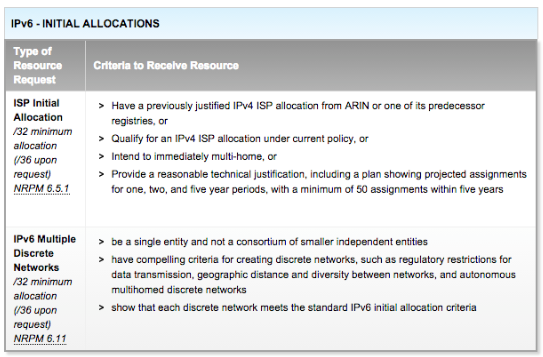The Internet of Things era means every single “thing” (even light bulbs) gets the ability to connect/interact with other devices and services. This implies that every connected device will be IP addressable for this vision of the future to happen. We are living in a time where people already have multiple devices connected; from smart meters, cars, mobile devices, tablets, medical devices, to appliances that may have an IP address on the internet. We all know the demand for addresses is continuing to grow. This is great news for consumers – but what does it mean for service providers? It means all those upgrades that have been “in progress” are going to have a very real timeline. The problem? That timeline is going to be driven forward by consumer technologies (they may not even realize it!) – so get ready. In case that’s not enough – compounding the shortage are the developing nations coming online and accelerating depletion of the IPv4 address space. Now is definitely the time to get a handle on how to best deploy IPv6 in your network and use this as a chance to differentiate your service offerings. So let’s dig into what it takes to prep for IPv6.
We should start simple – let’s assume you are service provider who offers services that customers pay you money for – VoIP, DSL, FTTH, MetroE, Unicorn grooming, etc. So, how do you prep for IPv6 without adding a new risk of service interruptions to your core business and revenue stream? Easy – evaluate your approach to IPv4 (you have an IP allocation policy, right?) and then realize that your IPv6 deployment will most likely not be the same. About 10 minutes after that, you should probably take an internal evaluation of your internal systems (that have all been properly documented of course – so this should be quick) and how IPv6 will impact them. We have seen everything from flat files to spreadsheets to field limited databases – the trick is being realistic and acknowledging reality, and ultimately preparing you to put an IPv6 Strategy in place. Also, it’s important to note that using IPv4 tools to manage IPv6 is needlessly painful, as the numbers are so drastically different (IPv4 addresses are 32 bits; IPv6 addresses are 128 bits). Take the opportunity to correct elements of your IPv4 deployment and do IPv6 right. Have an allocation plan, architect your IPv6 deployment before slinging code. With IPv6 – a little really goes a long way.
So the reason for the preceding “IPv6 Strategy” is that you are going to have to make some decisions on applying for your IPv6 space (if you haven’t made the request from ARIN already). The issue here is that depending on our method of allocation and/or deployment plans – you will want to get the right size the first time. Just keeps things neat since the blocks are so much larger than your IPv4 allocations, dealing with non-contiguous blocks in IPv6 can just another level of complexity to your strategy.
If you haven’t gotten your IPv6 allocation from ARIN (American Registry for Internet Numbers), the IPv6 address space is eligible for allocation to ISP/LIRs and assignment to end-users. If you offer IPv6 transit or assign IPv6 addresses to other organizations, you are an IPv6 ISP (also known as a Local Internet Registry, or LIR, in IPv6 policy). If you do not offer IPv6 transit and do not assign IPv6 addresses to other organizations, you are an IPv6 end-user.
To request an allocation, your organization must first establish Point of Contact (POC) handles and an Organization Identifier (Org ID).
Source: ARIN
Once POCs and Org IDs are registered, you can complete and submit a request through your ARIN Online account. More details can be found here.
With your ARIN account online and your IPv6 allocation – you are now ready to put your IPv6 allocation plan into action. Whether you use a simple document or a solution like 6connect ProVision, you typically want to architect your IPv6 blocks at a high level to match your internal policy (For example – we will assign /64s to Point to Point connections, and /48 per Geographic Region, etc.). With this in place, it will make your deployment and device configuration much easier and provide more opportunities for automation (trust us – you are going to want this).
So to recap:
- Learn the good/bad from your IPv4 deployment
- Identify the internal resources that you have/need for deploying IPv6
- Update your allocation plan for IPv6
- Get your IPv6 allocation (if you don’t have one already)
- Start provisioning your IPv6 resources in your scalable IP tool(s) and network objects
Questions? Concerns? You can contact us at 6connect to speak directly with an engineer. If you are looking for a turnkey solution for robust infrastructure provisioning automation, we’ve got your back.
Email: info@6connect.com or call +1 (650) 646-2206.








